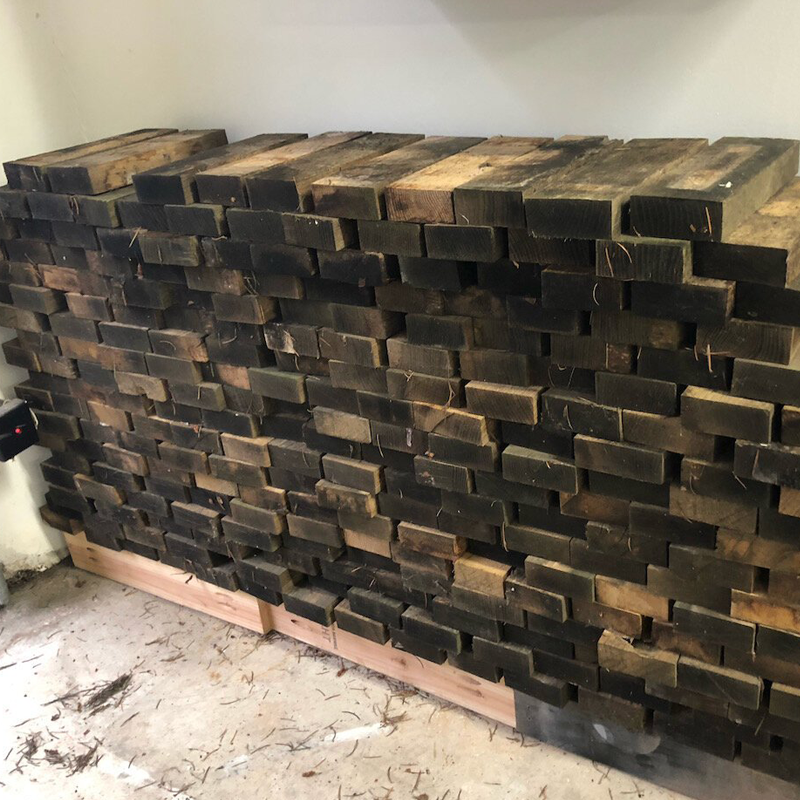1 - First Steps - Wood Preparation
Acquire some American White Oak or any other suitable wood which you have properly researched. For off-the-shelf wood, start with 5/4 thickness; after the whole process removes some wood, you’d like to be left with about 1” thickness. If your wood is already cooperage-seasoned, or is a species that does not require it, then skip the Stack and Weather steps.
I sell cooperage-seasoned wood in my Shop to help get you started faster!
Chop
I cut my wood across the grain to a length of approximately (barrel diameter + 1 ½”)
Any saw will do and precision is not important.
Rip
I rip the merrains to a width of approximately ((barrel diameter/3) + 1”)
I now use a modern saw with safety devices in place, and highly recommend you do as well. Without at least a riving knife, kickback can happen, and these merrains could really hurt you.
Stack
The wood should be stacked for weathering with lots of open space for air and water to flow through. Stickers (thin strips of wood) are used to separate the layers.
Season/Weather
Oak must be left outdoors in the weather to remove tannins, convert tannins and hemicellulose and lignin under the influence of microbial and fungal action. The length of time needed or desired is not fixed. Six months, over a wet season, should be a good starting point. Three years or more is not uncommon. Rotating the stacks a few times a year is probably a good idea.
Toasting
Now is the time to decide which side of the merrain will be the outside of the barrel head. Only the “inside” side of the oak may be toasted. Toasted oak does not swell as much as un-toasted oak does, and we depend upon that swelling for our success.
Put the pretty side up and the ugly side down on a griddle. I use 400 °F. You might use a grill or the oven broiler, but take care that only one side gets very hot. I can’t vouch for anything other than the griddle.
Face Planing
The weathered wood is cleaned up by planing both faces of each merrain. Hand plane, thickness planer, drum sander, or jointer can be used for this operation.

Drying
The weathered wood should be moved indoors for some months to bring the water content down.